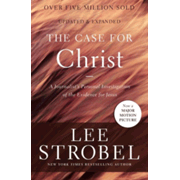
Ancient Tyre’s ruins, fulfilling Ezekiel’s prophecy.
Ezekiel 26 Prophecy: Tyre’s Destruction Explained
Ezekiel’s prophecy about Tyre’s destruction in Ezekiel 26 often sparks debates about Bible contradictions. On our February 5, 2024 episode, we dove into this supposed inconsistency: God declared Tyre would be destroyed and never rebuilt, yet a modern city named Tyre exists. Skeptics cry foul, but is this truly a contradiction? Spoiler: the Bible holds firm. We unpacked the historical and biblical evidence, revealing a fascinating twist involving two Tyres—one underwater, never rebuilt, and another miles away. With sharp insights and a touch of humor, we tackled this challenge head-on, grounding our answer in Scripture and archaeology. Let’s dive in!
Ezekiel 26 Prophecy Explained
The Ezekiel 26 prophecy declares that Tyre, a prominent Phoenician city, would face divine judgment: “I will make you a bare rock… you shall never be rebuilt” (Ezekiel 26:14, ESV). Critics point to modern Tyre in Lebanon, a bustling city, as evidence of a failed prophecy. But context matters. In our February 5, 2024 episode, we explored the historical record, noting that the original Tyre—an island city—was destroyed by Alexander the Great in 332 BC. Its ruins lie underwater, approximately 20 miles from modern Tyre, fulfilling the prophecy’s claim of permanent desolation. This distinction between the two Tyres—one a sunken ruin, the other a later settlement—resolves the alleged contradiction. For more on biblical prophecy, check our Theology Unpacked section.
Historical Context of Tyre’s Destruction
Tyre’s history is complex, involving an island city and a mainland settlement, Ushu (later called Palaetyrus). As Dr. Josh Bowen noted in our episode (~32:45, watch here), ancient kings, including Nebuchadnezzar, besieged Tyre via land blockades, but Alexander’s conquest was pivotal. He built a causeway, sacked the island city, and left it in ruins. Archaeological evidence, like the Tyre Archaeological Project by the University of Chicago and the British Museum (see here), confirms the original Tyre’s underwater remains. Modern Tyre, built miles away, is a distinct settlement. This aligns with Ezekiel’s words—God’s judgment targeted the specific city, not a namesake. Skeptics might quibble over proximity, but as I said, “If God says Tyre won’t be rebuilt, and the original’s underwater, score one for Jesus” (~3:12).
Rebuild vs. Repair: Does Wording Matter?
A skeptic in the episode raised whether “rebuild” versus “repair” in Ezekiel 26:14 affects the prophecy’s fulfillment (~35:04). The Hebrew word *banah* means to build or restore, implying a restoration of the original city. Since the biblical Tyre’s ruins remain underwater, unrestored, the prophecy stands. Building a new city nearby doesn’t negate God’s decree—it’s like saying a new TV replaces a broken one; it’s not the same unit (~9:08). For deeper dives into biblical language, explore our Catechism Lessons. So, what’s your take—does a new city miles away count as rebuilding? Share below!
Recommended Resources

Defend your faith with C.S. Lewis’s Mere Christianity—a must-read for tackling Ezekiel 26 prophecy debates.

Explore evidence for Scripture with Lee Strobel’s The Case for Christ—perfect for Ezekiel 26 skeptics.
The Ezekiel 26 prophecy underscores God’s sovereignty and the Bible’s reliability. The original Tyre lies in ruins, fulfilling Ezekiel’s words, while modern Tyre is a separate entity. Scripture stands unassailable—God’s decrees endure. For skeptics, I echo my episode challenge: if 20 miles of water doesn’t settle this, humble your heart, seek Jesus, and ask Him to reveal truth (John 14:6). Join the conversation below—what’s your view on Tyre’s prophecy? Support our mission and dive deeper into biblical answers!
Share this: #Ezekiel26Prophecy #BibleContradictions #AskAChristian
